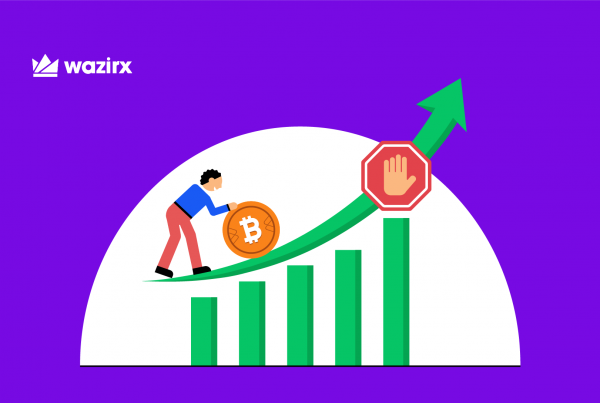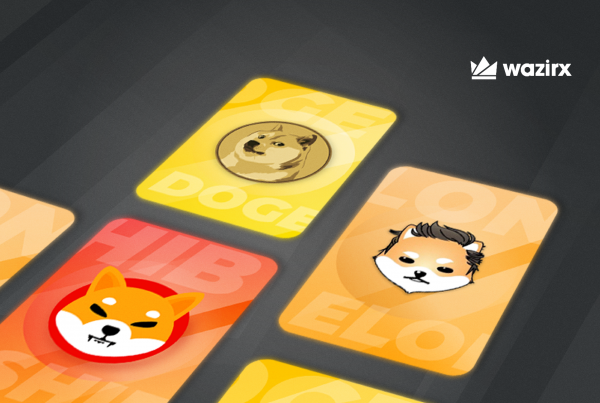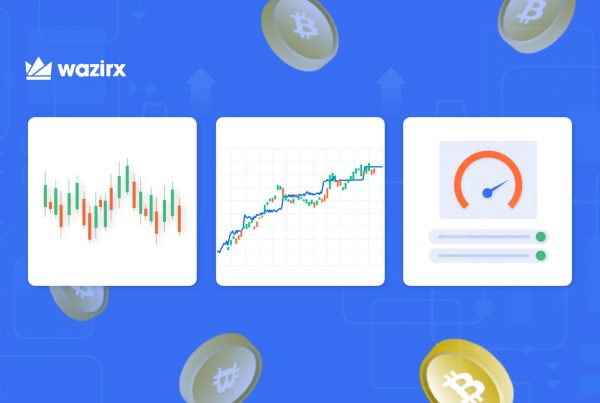Table of Contents
Often dubbed the next “Ethereum killer”, Solana is an open-source, web-scale blockchain protocol that enables developers to create decentralized apps and marketplaces. The fast, secure, and censored-resistant architecture of Solana makes it the ideal platform for mass adoption. The crypto market seems to have realized this – sending its token – SOL – from a low of $23 in July to a whopping $195 in early September. That’s more than 8x returns in less than 2 months!
What’s all the hype about? Why is Solana headed to the sun?
Solana: Deep Dive
Solana is a distributed network that uses advanced computational technologies to allow its users to transact seamlessly across thousands of nodes. Its robust network performance makes it the fastest blockchain globally, claiming to handle more than 50,000 transactions per second. Solana uses the Proof of Stake (PoS) and Proof of History (PoH) consensus mechanism to improve the throughput.
Until now, the de facto mechanism to achieve consensus on a distributed ledger has been Proof of Work (PoW), in which the miners compete with each other using their computational power to solve a cryptographic problem. The first miner to solve this problem receives a reward in return.
As this process was much more energy-consuming and required more computational power, a new, more efficient method called the Proof of Stake (PoS) emerged. In this consensus model, the probability of validating a new block is determined by how large of a stake a person holds. Here, the miner puts up his token as collateral. In return, he receives authority over the token in proportion to his stake.
In 2017, Anatoly Yakovenko published a whitepaper on Solana, which described a new timekeeping method that could allow decentralized networks to perform transactions automatically. This new method to cryptographically verify the passage of time between two events is called Proof of History (PoH). The white paper was the first to describe this new method.
Solana also implemented the Tower BFT algorithm, which enforces a universal time source across the network through PoH, creating a permanent common record for all the transactions in the blockchain. Solana’s Tower BFT (Byzantine Fault Tolerance) algorithm also addresses the following problems:
- Some forks may not get accepted by the supermajority of the cluster, and voters need to recover from voting on such forks.
- Many forks may be votable by different voters, and each voter may see a different set of votable forks. The selected forks should eventually converge for the cluster.
- Reward-based votes have an associated risk. Voters should have the ability to configure how much risk they take on.
- The cost of rollback needs to be computable. It is crucial to clients that rely on some measurable form of Consistency.
- ASIC speeds are different between nodes, and attackers could employ Proof of History ASICs that are much faster than the rest of the cluster. Consensus needs to be resistant to attacks that exploit the variability in Proof of History ASIC speed.
Solana Labs was originally founded as a spinoff of the Loom Network, a popular multichain interoperability platform. It was rebranded to Solana Labs in 2019 to avoid being confused with its former name. The company’s beta mainnet was launched in March 2020.
Why is Solana Rallying?
It’s quite obvious when you take a closer look. The innovations that Solana packs are an investor’s delight:
Solana is the first web-scale blockchain that uses PoH and Tower BFT to record transactions at a faster rate. Currently. Bitcoin handles 5 to 7 transactions per second (TPS), and Ethereum handles 25 TPS. In comparison, Solana boasts a TPS value of 50K, making it a better alternative for Ethereum. Solana has an average block time of 600 milliseconds – This is the time it takes to create a new block on the blockchain.
Solana aims to solve scalability and speed concerns with its high-performance protocol, implementing revolutionary time recording architecture and a more efficient consensus model compared to other blockchains. This makes Solana the world’s fastest layer-1 network. Solana’s ultimate goal is to solve the trilemma in blockchain technology by qualifying all three properties of decentralization networks – decentralization, security, and scalability. Solana’s eight key innovations achieve this.
Below are eight key innovations that make it stand out.
- Proof of History (PoH)
PoH is not a consensus mechanism; instead, it is a cryptographic clock that enables nodes to agree on a time order without interacting with each other. This is made possible as each node has its own cryptographic clock.
- Tower BFT
Solana’s Tower BFT is an advanced practical Byzantine fault tolerance (pBFT) algorithm that works seamlessly with PoH. It achieves its speed by taking advantage of the cryptographic clock to reach a consensus without going through multiple messages among nodes.
- Turbine
This is a block propagation protocol that breaks data into small fragments, making it easier on the nodes. This, in turn, increases the processing power and the networks overall transaction speed.
- Gulf Stream
Gulf Stream is a mempool-less transaction forwarding protocol that enables Solana to reach 50,000 TPS. It allows network validators to execute transactions ahead of time, thereby increasing speed.
- Sealevel
Sealevel is a parallelized transaction processing engine that processes concurrent data on the same chain. It enables Solana to scale horizontally across GPUs and SSDs.
- Pipelining
The process of assigning a stream of input data to different hardware for processing is called pipelining. It acts as a transaction processing unit for validation optimization.
- Cloudbreak
Memory used to keep track of accounts quickly becomes a bottleneck in both size and access speeds. Cloudbreak is a state architecture optimized for concurrent reads and writes spread across the configuration of SSDs, improving scalability and throughput.
- Archivers
Storing the data on a blockchain network can quickly become the primary centralization vector. This collapses the very first idea of decentralization; hence the data storage is offloaded by Solana’s validators to a network of nodes called the Archivers.
Solana’s native token – SOL
As with most smart token platforms, Solana uses SOL as their gas token to pay for all on-chain transactions. As of September 2021, SOL, considered to be the long-term rival for Ethereum, stands at number seven, climbing the ladder of the ten most valuable cryptocurrencies. Given that Ethereum too is shifting to a proof of stake model with Ethereum 2.0, the market’s interest in such technologies is understandably on the rise, and t certainly helps that Solana is already right up there on that front, taking advantage of this momentum shift and sending SOL flying to the sun!
Disclaimer: Cryptocurrency is not a legal tender and is currently unregulated. Kindly ensure that you undertake sufficient risk assessment when trading cryptocurrencies as they are often subject to high price volatility. The information provided in this section doesn't represent any investment advice or WazirX's official position. WazirX reserves the right in its sole discretion to amend or change this blog post at any time and for any reasons without prior notice.
















